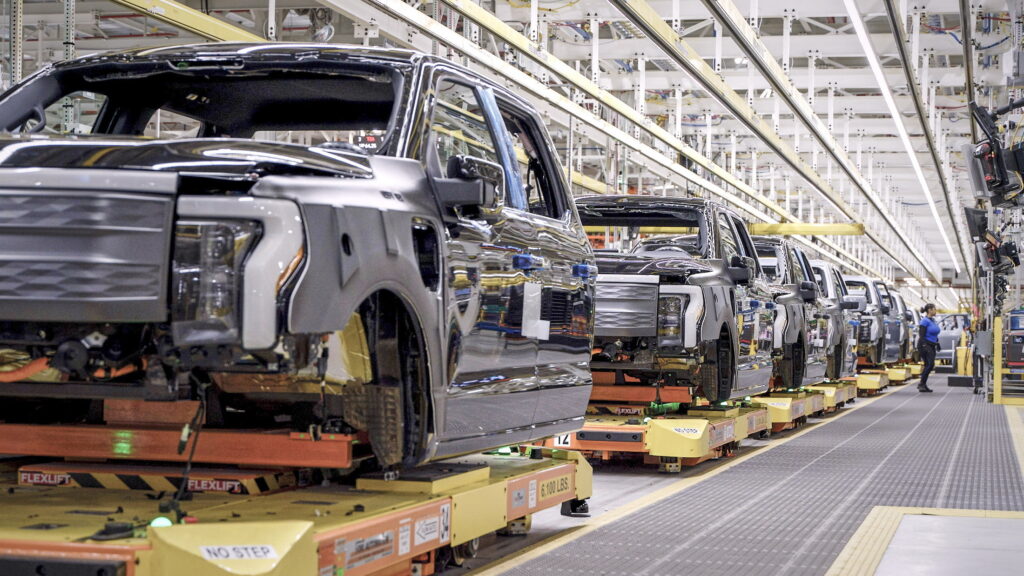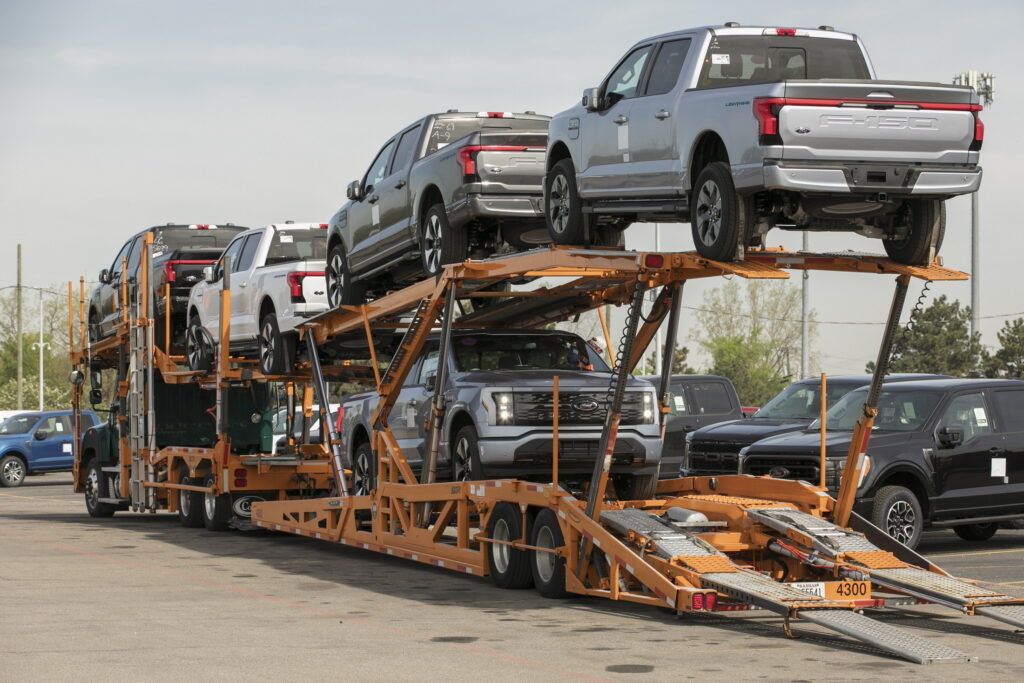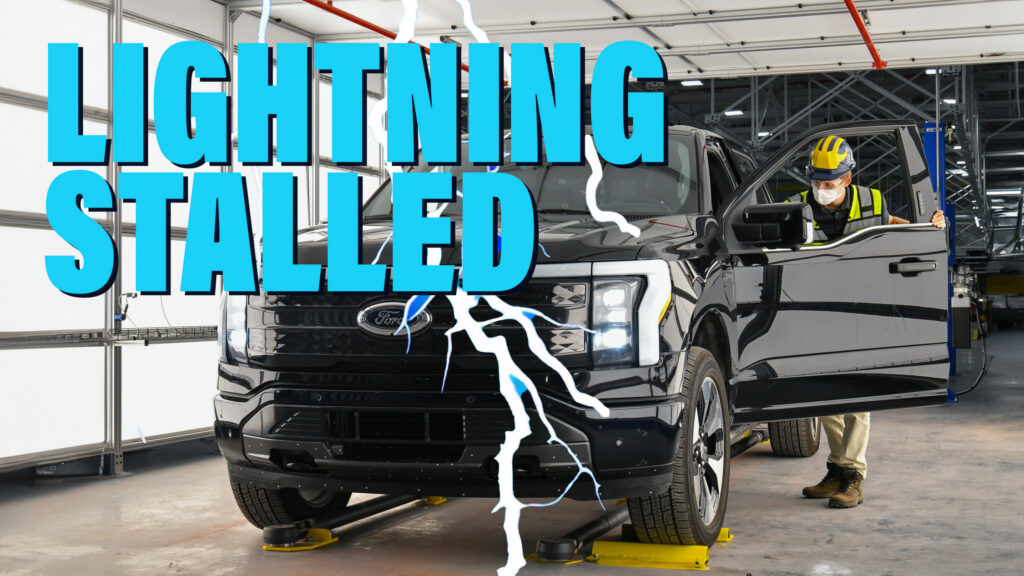- Production targets for the electric truck are reduced by about two-thirds to align supply with demand.
- The Rouge Electric Vehicle Center in Michigan will see significant staff reductions due to production cuts, with many workers being transferred to other Ford plants or offered retirement packages.
- Ford’s CFO acknowledges slower EV market growth, emphasizing the need for stricter cost controls in the company’s EV division.
Ford is significantly scaling back its production ambitions for the F-150 Lightning in an effort to align supply with demand. The automaker will reduce staff on the truck’s production line, slashing its production targets by about two-thirds.
The Rouge Electric Vehicle Center in Dearborn, Michigan, was supposed to have up to three shifts run by around 2,100 workers. As of April 1, just a third of those will remain on site, while 700 will be transferred to Ford’s plant in Wayne, Michigan, to build the Bronco and the Ranger. The remaining workers will either take a retirement package or accept reassignment to southeast Michigan.
“The Rouge Electric Vehicle Center, we call it REV-C, was ramping up their second crew. They’re now going to lay off that second crew and not put the third crew on,” Todd Dunn, president of UAW Local 862, said, per Freep. “Their intentions were to build 180,000-plus units. Right now, we’re looking at 55,000 units they’re gonna build.”

Ford has not confirmed production targets for the plant but said that production adjustments will not result in job losses for workers. The company added that dealers around the country have F-150 Lightnings in stock and that more are coming soon, because many new vehicles have been held for quality review since February 9.
Read: Ford Halts F-150 Lightning EV Shipments Over Unspecified Quality Issue
Separately, Ford’s finance chief, John Lawler, said that the company is working hard to match production with demand for electric vehicles. He said that, like many other automakers, Ford expected the EV segment to grow faster than it has.
“We are right-sizing our capacity and the investments that we’re putting into EVs. But it’s not a matter of ‘if,’ it’s a matter of ‘when,'” said Lawler. “We’re moving into the early majority. And the early majority is much less forgiving, and pricing is an issue.”
But pricing will have to be brought under control, he said. Ford Model e, the automaker’s electric vehicle unit, will have to “stand on its own”. Currently, the division costs the automaker billions and leans heavily on profits from its internal combustion and commercial units.
Becoming profitable won’t be a cakewalk for Ford’s EV division. Lawler said the company’s electric strategy assumes very stiff competition and that it is looking at radical changes to how it has built vehicles up until now.





